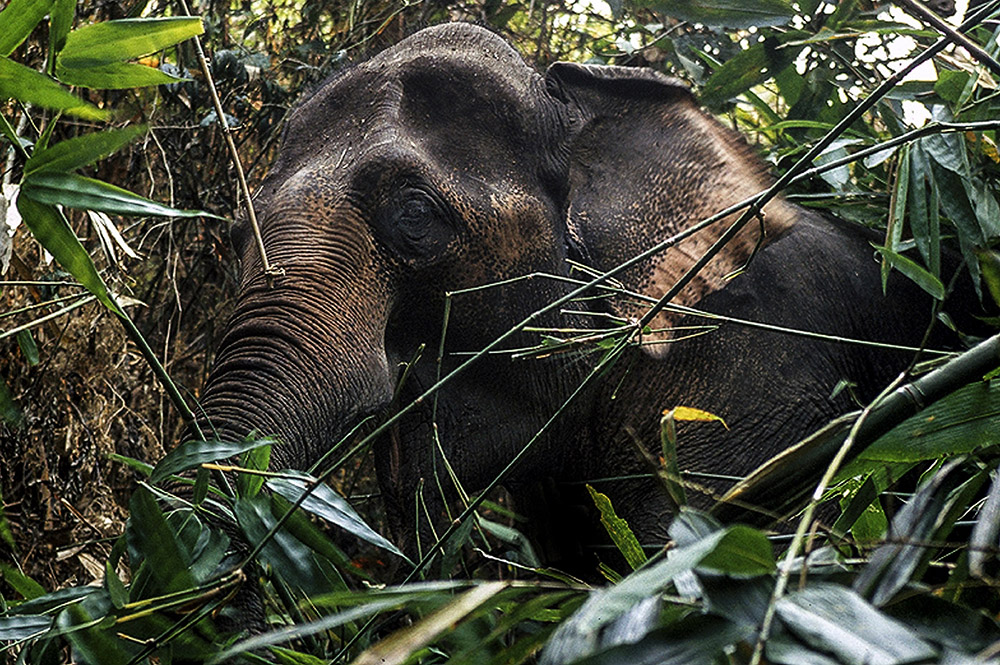
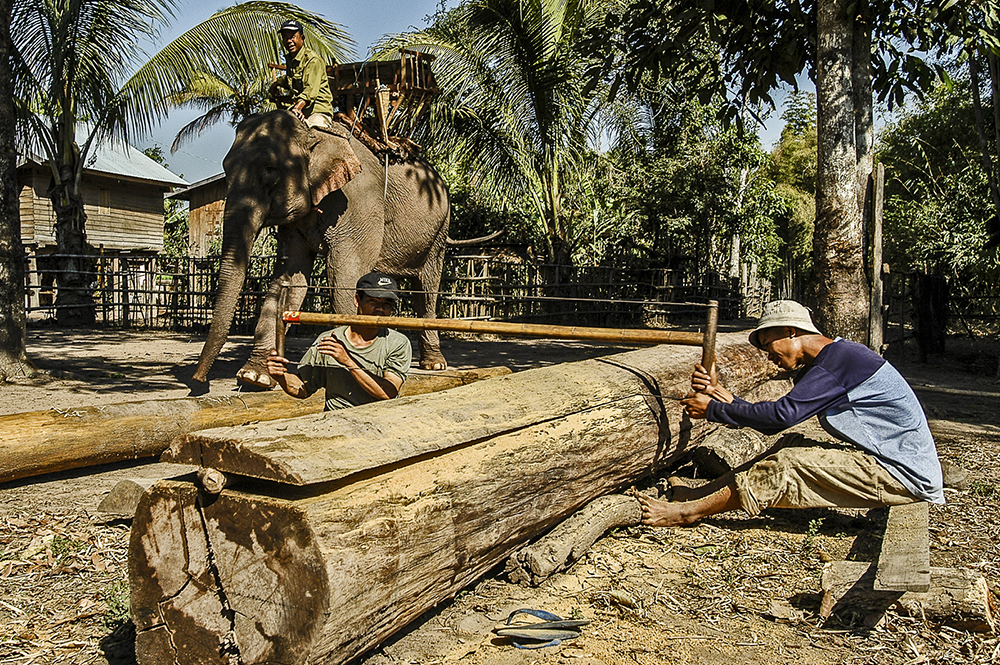
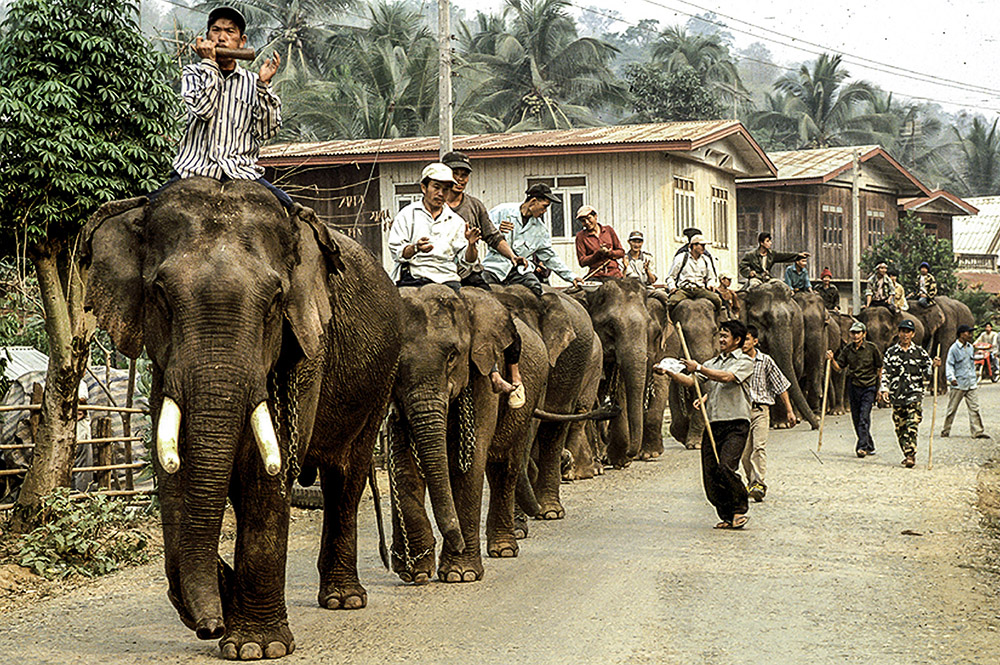
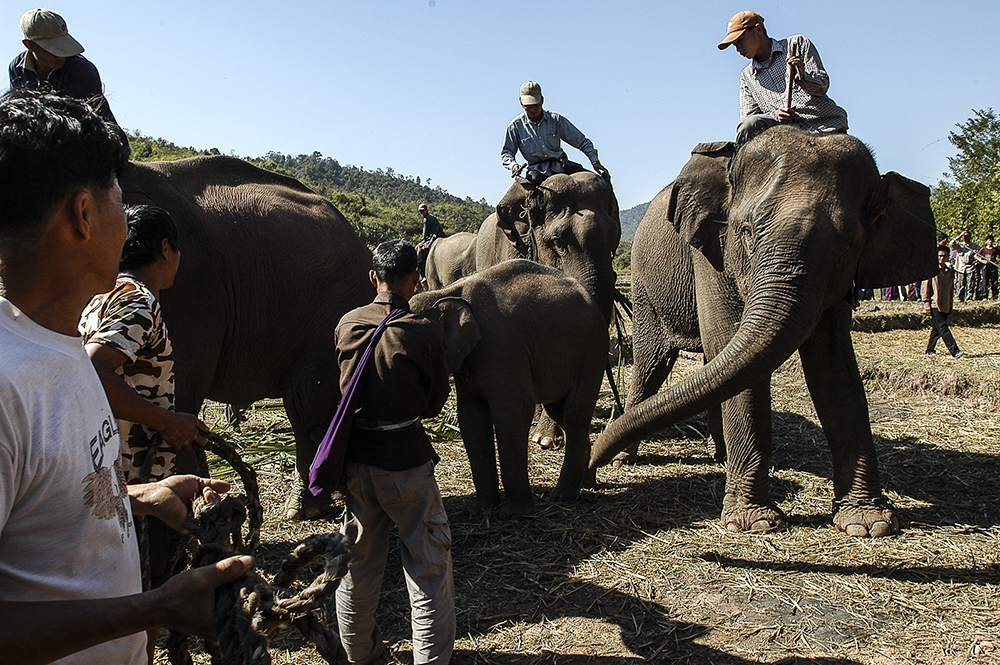
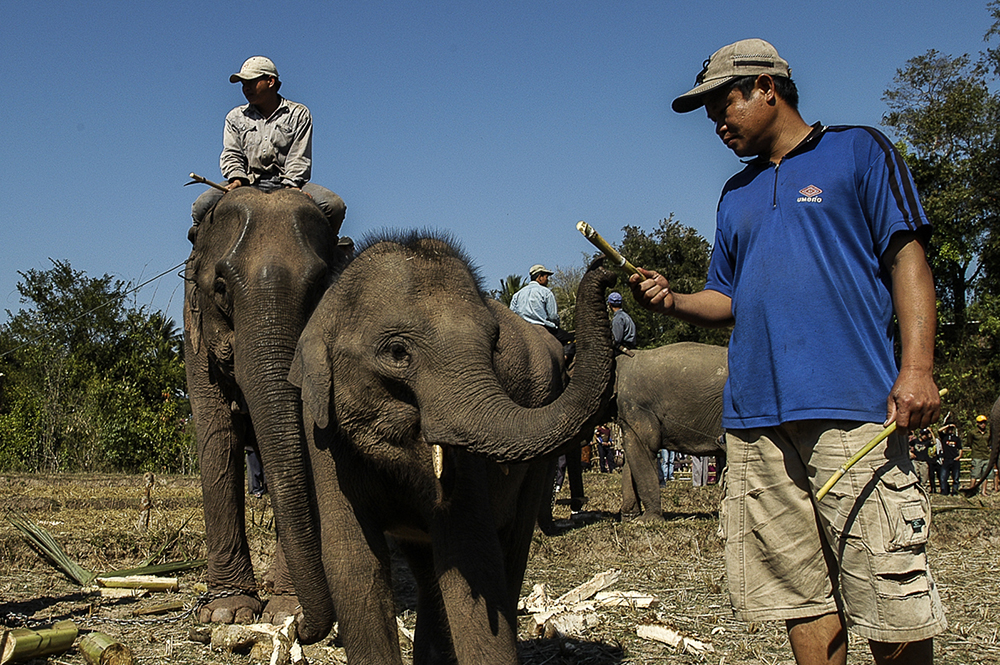
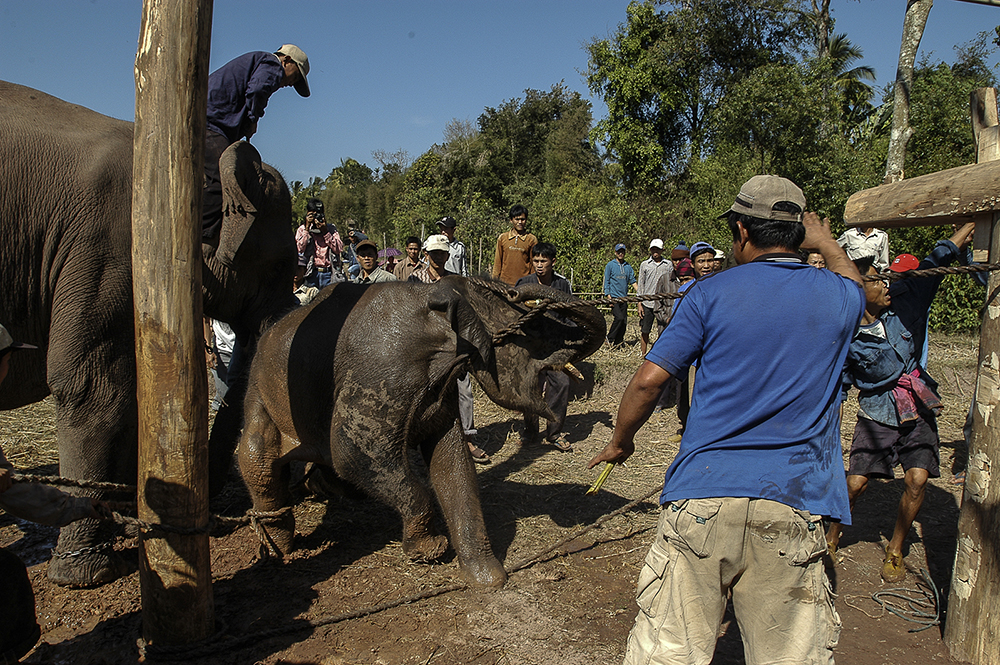
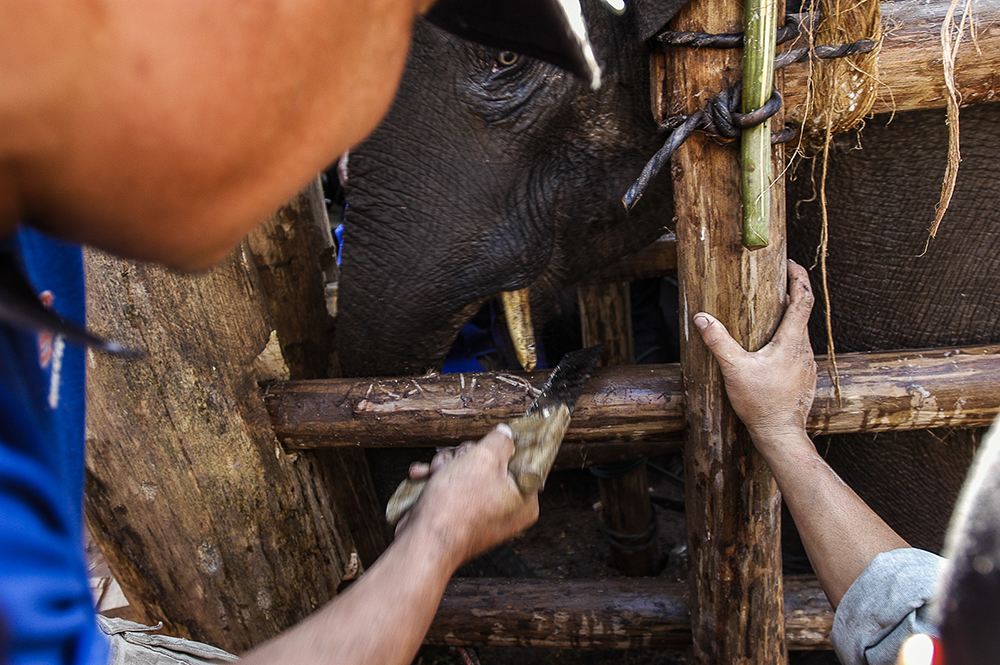

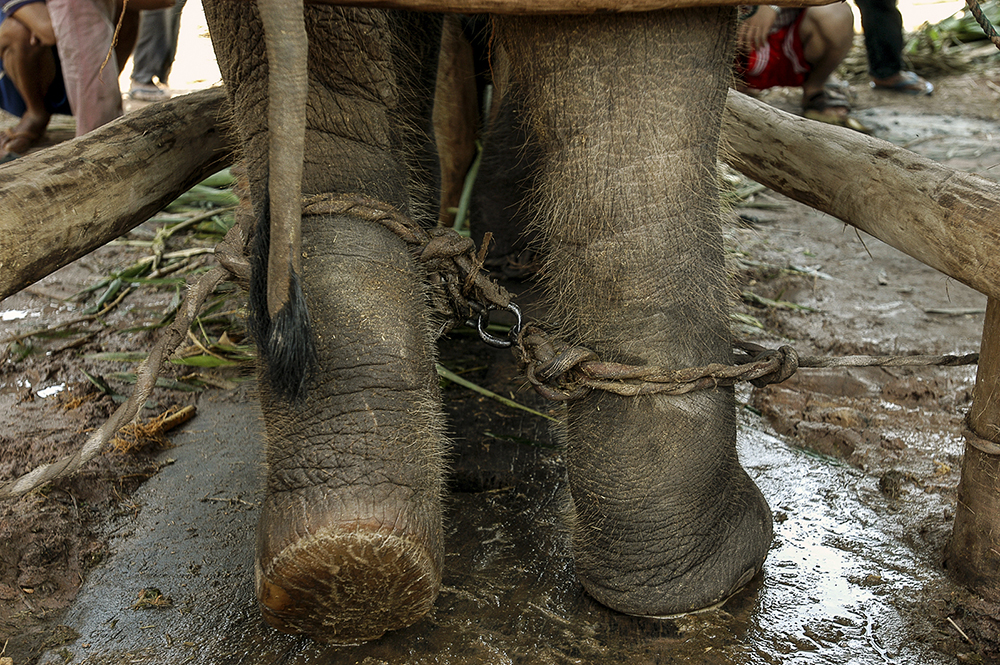
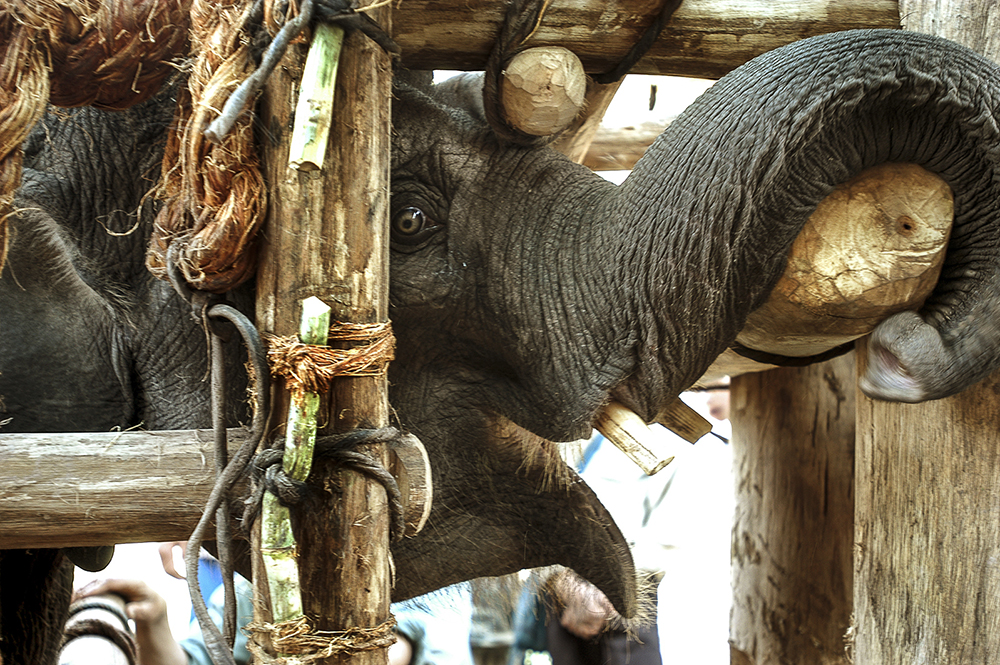
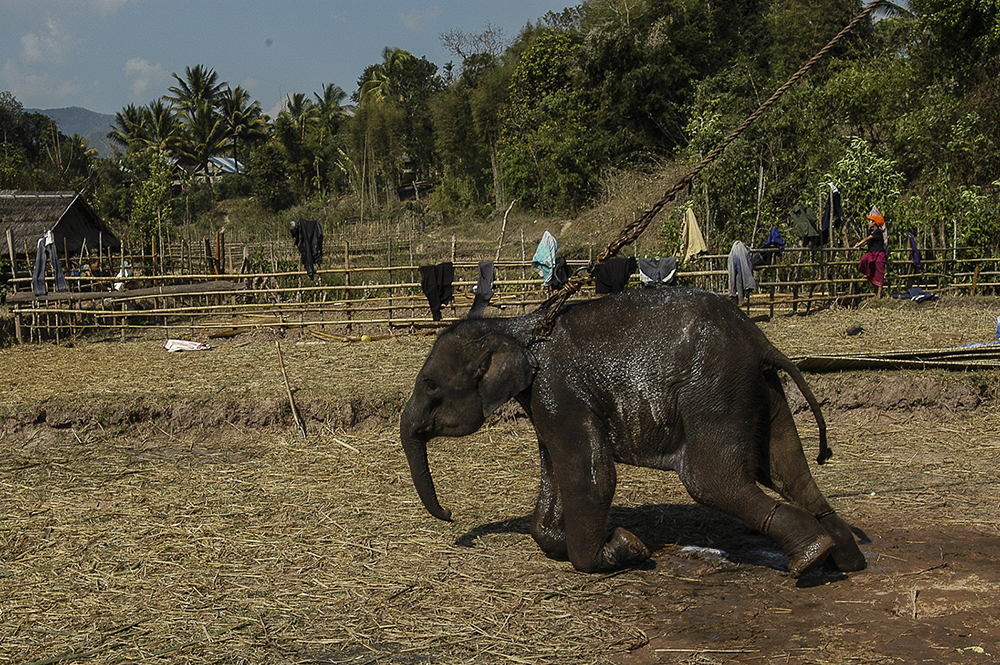
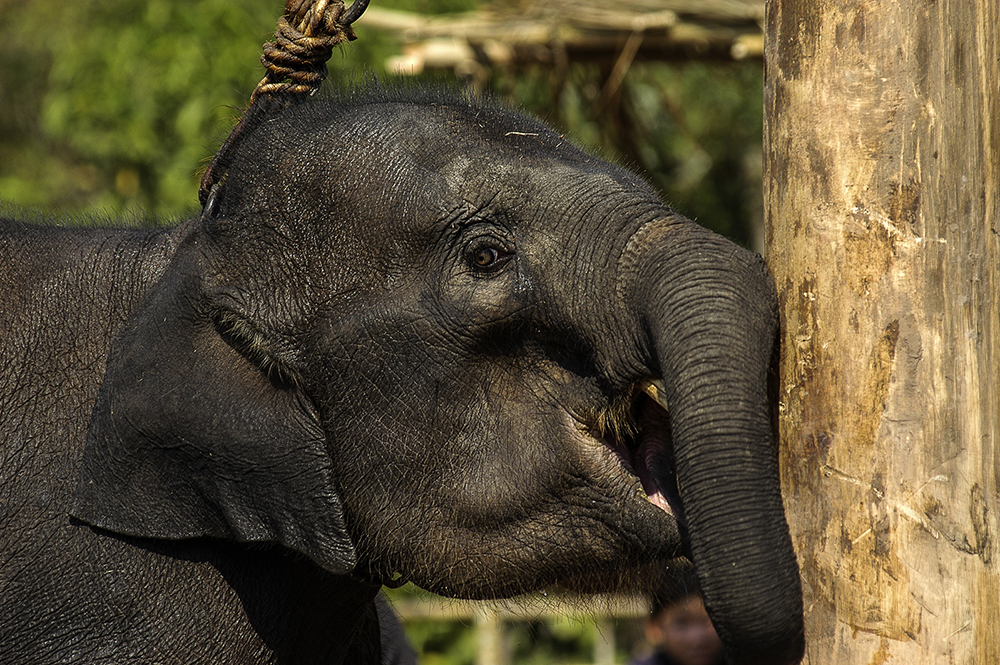
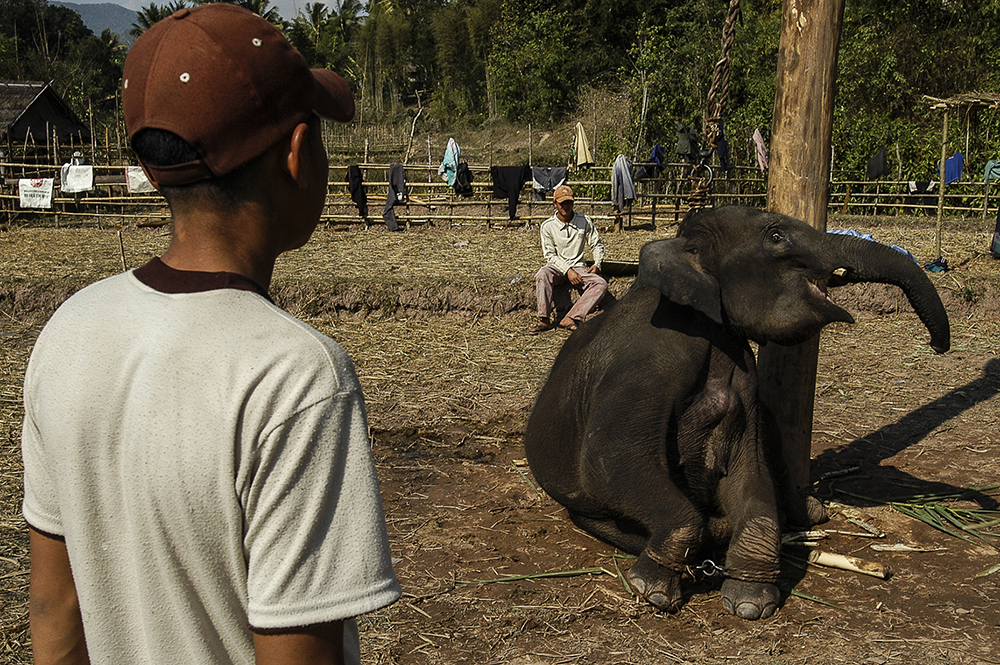
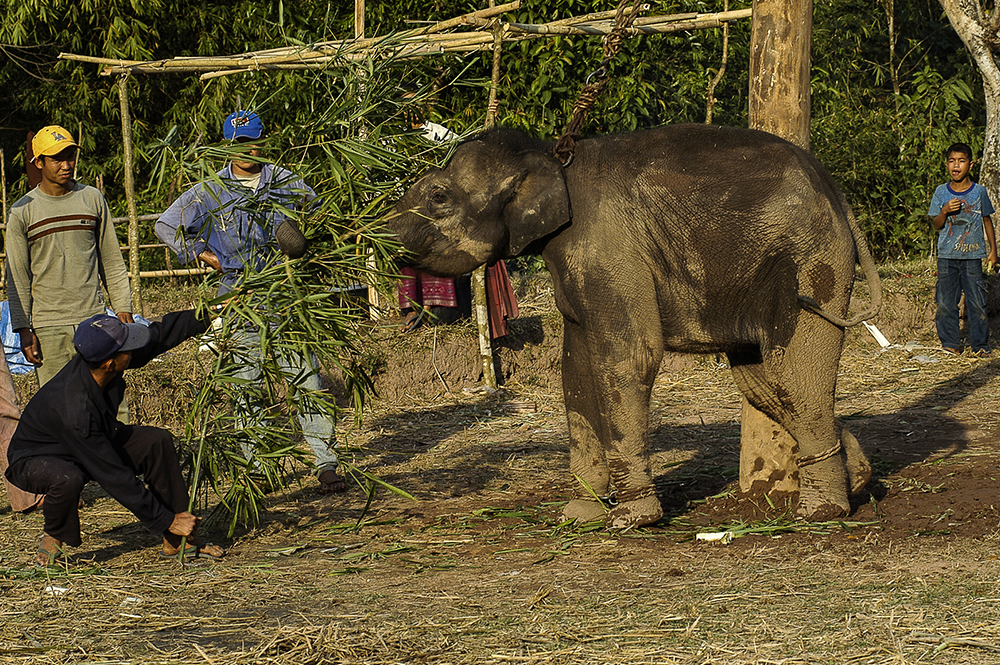
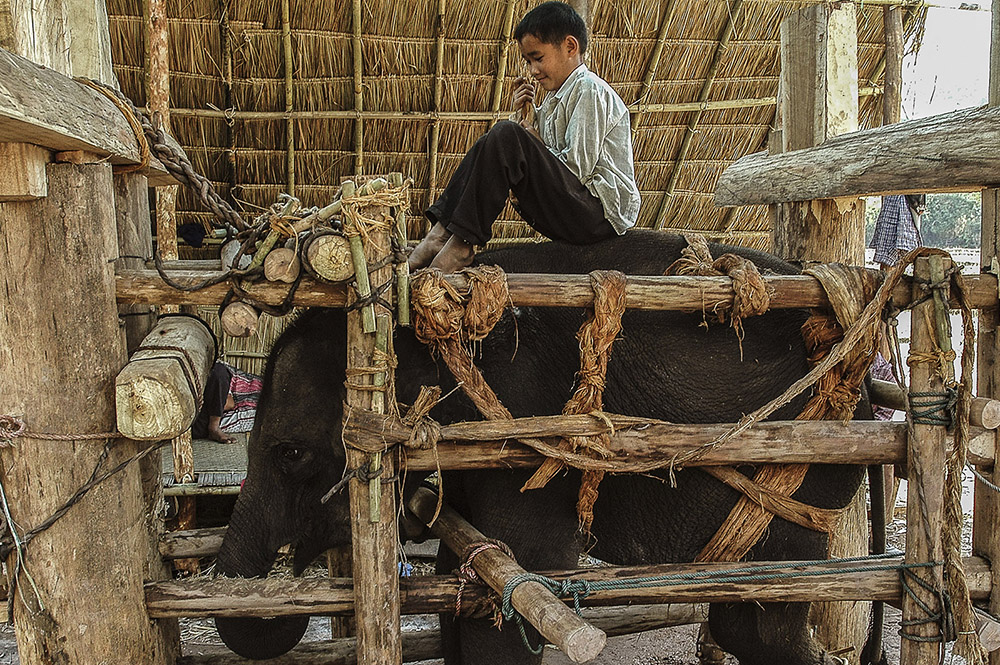
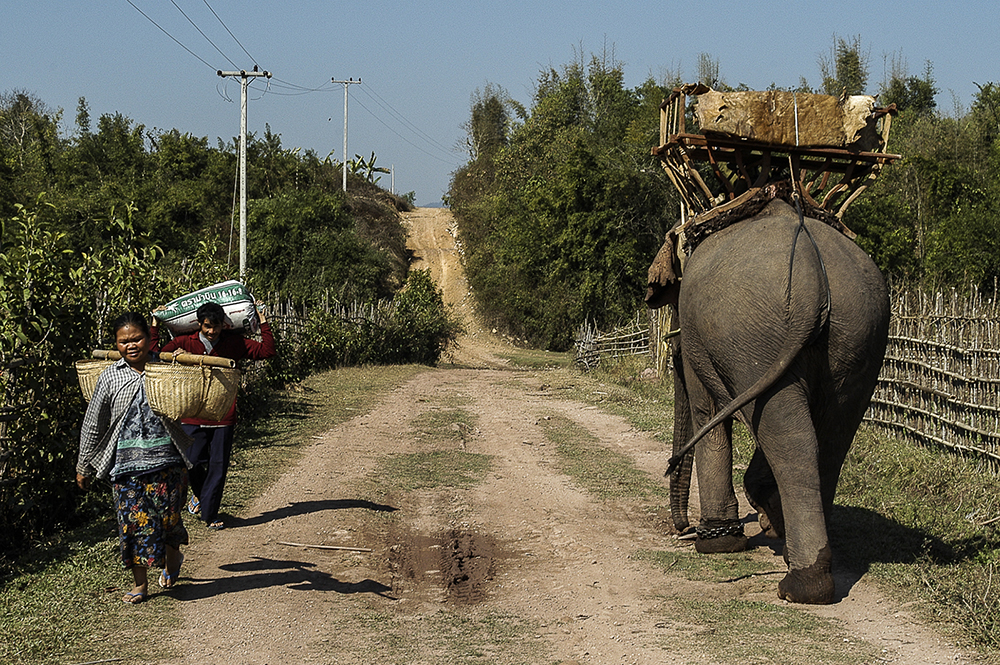
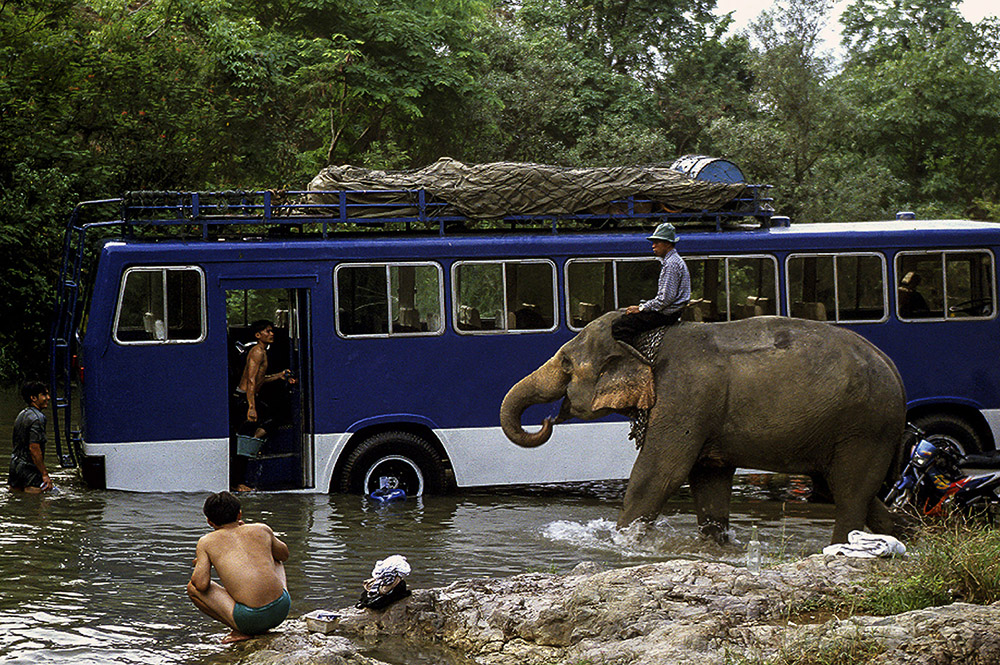
frLe Laos portait autrefois le nom de Lan Xang, le pays au million d’éléphants.
Aujourd’hui on estime leur nombre à environ 1500, dont 560 domestiqués qui pour la plupart travaillent à la récolte du bois et detruisent l'habitat naturel des élephants sauvages.
Comme dans de nombreux pays d'Asie, l'éléphant du Laos est utilisé par l'homme pour les travaux forestiers comme le débardage. Attelés à de lourdes grumes de bois, ils doivent tirer ces dernières sur de longues distances, du plus profond des forêts vers les routes ou les rivières où des camions viennent charger les troncs de bois précieux.
Paradoxalement, les éléphants sont utilisés à la destruction de leur propre habitat. C'est d'autant plus paradoxal que l'éléphant en Asie est supposément sacré !
En effet, l'éléphant est symbole de fertilité, de puissance, de sagesse et de sacralité dans de nombreux pays (principalement ceux qui ont connu une influence culturelle venant de l'Inde).
On retrouve dans l'imagerie populaire et religieuse d'Asie l'éléphant sous de très nombreuses formes et ses représentations sont innombrables...
Pourtant, malgré cette vénération, l'éléphant d'Asie est aujourd'hui en voie d'extinction sur tout le continent où il ne reste qu'environ 50 000 individus.
La modernité s'accommode mal de la présence de ces doux géants qui pourtant peuplaient déjà la planète alors que l'homme n'était pas encore apparu.
Les éléphants sauvages sont menacés par la destruction de leur habitat et de leurs routes migratoires (déforestation, extension des terres agricoles, projets industriels, routes, barrages, mines, etc).
Le braconnage pour l'ivoire est aussi une cause de disparition des éléphants au Laos. Comme dans toute l'Asie,
Le braconnage au Laos a une influence doublement négative sur les populations d'éléphants car chez l'éléphant d'Asie, seuls les mâles ont des défenses. Ils sont donc la cible prioritaire des braconniers ce qui a pour effet de créer un déséquilibre entre les sexes.
Il y a donc beaucoup moins de mâles que de femelles dans les forêts d'Asie et les mâles qui survivent sont en général les moins bien dotés génétiquement !
en
Laos formerly bore the name of Lan Xang, the land of a million elephants.
Today their number is estimated at about 1,500, including 560 domesticated who mostly work in timber harvesting and are destroying the natural habitat of wild elephants.
As in many Asian countries, the Lao elephant is used by man for forestry work like hauling. Coupled with heavy logs of wood, they should take the last over long distances, from deep forests to roads or rivers where trucks come to load the precious wood trunks.
Paradoxically, elephants are used for the destruction of their own habitat. It is particularly ironic that the elephant in Asia is supposedly sacred! Indeed, the elephant is a symbol of fertility, power, wisdom and sacredness in many countries (mainly those who have experienced a cultural influence from India).
Found in the popular and religious imagery Asian elephant in very many forms and representations are countless ...
Yet despite this veneration, the Asian elephant is now endangered on the continent where only about 50 000 individuals left.
Modernity does not accommodate the presence of these gentle giants who already inhabited the planet as the man had not yet appeared.
Wild elephants are threatened by habitat destruction and their migratory routes (deforestation, agricultural expansion, industrial projects, roads, dams, mines, etc.).
Poaching for ivory is also a cause of extinction of elephants in Laos. As throughout Asia,
Poaching in Laos has a doubly negative impact on elephant populations as among the Asian elephant, only the males have tusks. They are thus the primary target of poachers that has the effect of creating a gender imbalance.
There are so many fewer males than females in the forests of Asia and the males that survive are generally less well endowed genetically!
